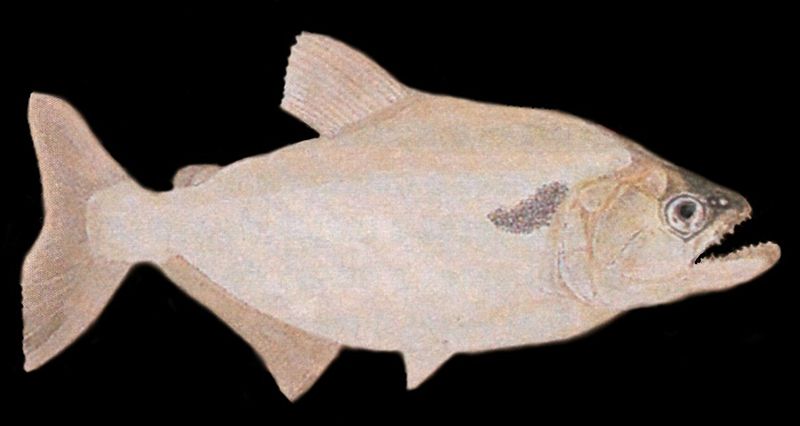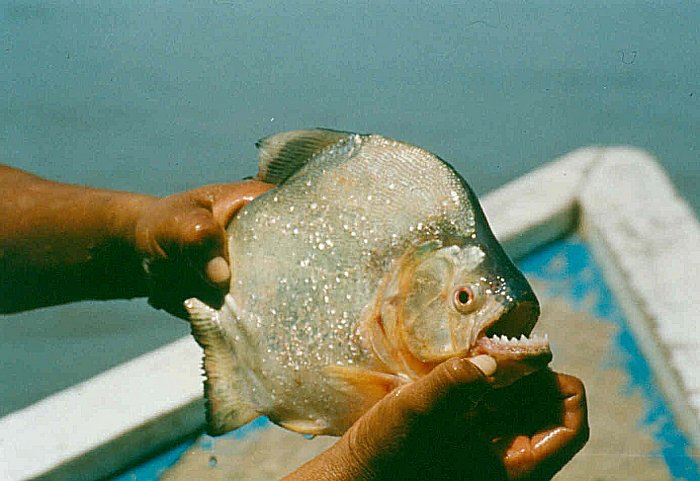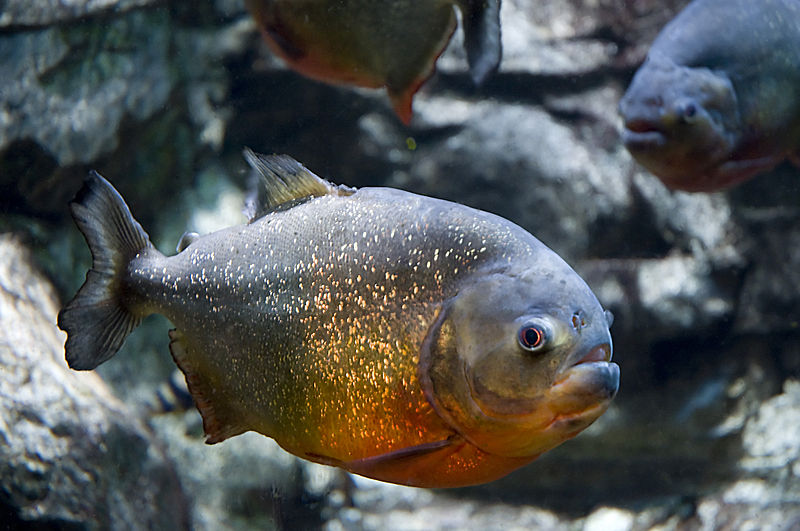Hello, Frank Indiviglio here. In Part 1 of this article I wrote about some of my experiences with Red-Bellied Piranhas in the wild, and examined some of the myths and realities surrounding their fearsome reputations.
Bird-Eating Piranhas

Hello, Frank Indiviglio here. In Part 1 of this article I wrote about some of my experiences with Red-Bellied Piranhas in the wild, and examined some of the myths and realities surrounding their fearsome reputations.

 Hello, Frank Indiviglio here. With the movie Piranha 3D in theaters, I though now might be a good time to write a bit about how wild Red-Bellied Piranhas (Pycocentrus nattereri) actually behave. Unfortunately, no matter how outlandish the movie may be, there are people who will retain what they see and regard it as fact. I still recall that, for months after the movie Anaconda premiered, I was deluged with calls from viewers spouting the strangest “facts” (I was working at the Bronx Zoo at the time…management had been approached by the movie’s production company, but had declined to become involved). Read More »
Hello, Frank Indiviglio here. With the movie Piranha 3D in theaters, I though now might be a good time to write a bit about how wild Red-Bellied Piranhas (Pycocentrus nattereri) actually behave. Unfortunately, no matter how outlandish the movie may be, there are people who will retain what they see and regard it as fact. I still recall that, for months after the movie Anaconda premiered, I was deluged with calls from viewers spouting the strangest “facts” (I was working at the Bronx Zoo at the time…management had been approached by the movie’s production company, but had declined to become involved). Read More »
 Craig here with another blog about yet another species of piranha. We have looked at the Red Belly and the Black piranha, now it is time to take a look at one of the most aggressive and predatory of all piranha species – the Elongated Piranha.
Craig here with another blog about yet another species of piranha. We have looked at the Red Belly and the Black piranha, now it is time to take a look at one of the most aggressive and predatory of all piranha species – the Elongated Piranha.
While many species have a similar and classic look to them, this species is physically unique. Serrasalmus elongatus, also known as the Slender or Pike Piranha, is a sleek predator from the waters of Venezuela and Brazil. Like many other piranha species, it has a shiny silver body with fearsome teeth. It is a highly active and highly motivated predator of other fish from the region. While the coloration and eating habits are similar to other piranha, it is the elongated shape of this fish that separates it from its cousins. Read More »
Hello, Craig here. In my last blog, I introduced the infamous Red-bellied Piranha. Now let’s talk a less common species, the Black Piranha.
 Serrasalmus rhombeus is a brute of a fish. Like all piranha species, the Black Piranha calls the Amazon and Orinoco river basins of South America their home. Though this is a relatively widespread fish, there is actually a “complex” of species that all fall under the “rhombeus” name. All of them develop blood red eyes as they mature and their colors range from silver to black to a pale grey. The Black Piranha is a sleek top end predator that can attain sizes or well over 12 inches. Some people make claims that this beast can grow as large as 20 inches or more.
Serrasalmus rhombeus is a brute of a fish. Like all piranha species, the Black Piranha calls the Amazon and Orinoco river basins of South America their home. Though this is a relatively widespread fish, there is actually a “complex” of species that all fall under the “rhombeus” name. All of them develop blood red eyes as they mature and their colors range from silver to black to a pale grey. The Black Piranha is a sleek top end predator that can attain sizes or well over 12 inches. Some people make claims that this beast can grow as large as 20 inches or more.
As juveniles, the Black Piranha is known to feed on the fins and scales of larger fish, as well as insects and small crustaceans. This behavior changes as the fish ages. At maturity, the rhombeus piranha is a lightning-fast predator. Their bodies are laterally compressed and very streamlined. This allows for quick pursuit of their prey. Whether taking a whole fish, or simply shearing off parts of their prey, the attack is always fast and brief.
Most of the fish in this complex are found in fast flowing rivers, but the larger adults can be found in deeper waters. In the home aquarium, keeping a single specimen in a large tank of at least 120 is the only way to go. These fish are highly aggressive towards one another in captivity, and will rarely accept others as tank mates. Typically a shy fish, it is wise to provide a large piece of driftwood for cover. Keeping the lighting subdued will encourage the fish to feed and be more active at all hours of the day. Powerheads can be used to create current and oxygenation as found in their native habitat, and will help to keep this species of piranha in excellent health. Feeding will require a varied diet of shrimp, fresh fish filets, and pellets. Some individuals are quite stubborn, and may prefer live foods when first acquired. If you are going to feed them live fish, it is always a good idea to quarantine the fish before you offer them as food to your piranha. It is also recommended that you do not feed your piranha live goldfish, but instead opt for guppies, rosey-reds or mollies. A large and efficient bio-filter will be needed to help to deal with the waste the fish produces. Weekly water changes will help to keep the environment in top condition and allow for the best possible growth rate and coloration.
While these fish are not readily seen for sale in stores, you do see them available from time to time. They are hardy and long-lived aquarium inhabitants when they are cared for properly. Next time I will talk about one of the most unique of all piranha – Serrasalmus elongatus , the Elongate Piranha.
Black Piranha image referenced from wikipedia and originally posted by Torox
 It is a calm day on the Amazon River. Two men are fishing in their small wooden boat. As one casts his line, he slips and falls into the water. Instantly, the surface of the water begins to roil and boil with action as a school of flesh-eating piranhas begins to do their nastiest work on the unfortunate fisherman. Minutes later, there is nothing left as the piranhas have eaten their fill. That is the myth. Aggressive and voracious schools of shiny silver and red fish with razor sharp teeth ready to devour anything that touches the water. So how true is that myth? We’ll be talking about the common Red-belly today, and some more commonly seen piranha in my next blogs. Read More »
It is a calm day on the Amazon River. Two men are fishing in their small wooden boat. As one casts his line, he slips and falls into the water. Instantly, the surface of the water begins to roil and boil with action as a school of flesh-eating piranhas begins to do their nastiest work on the unfortunate fisherman. Minutes later, there is nothing left as the piranhas have eaten their fill. That is the myth. Aggressive and voracious schools of shiny silver and red fish with razor sharp teeth ready to devour anything that touches the water. So how true is that myth? We’ll be talking about the common Red-belly today, and some more commonly seen piranha in my next blogs. Read More »